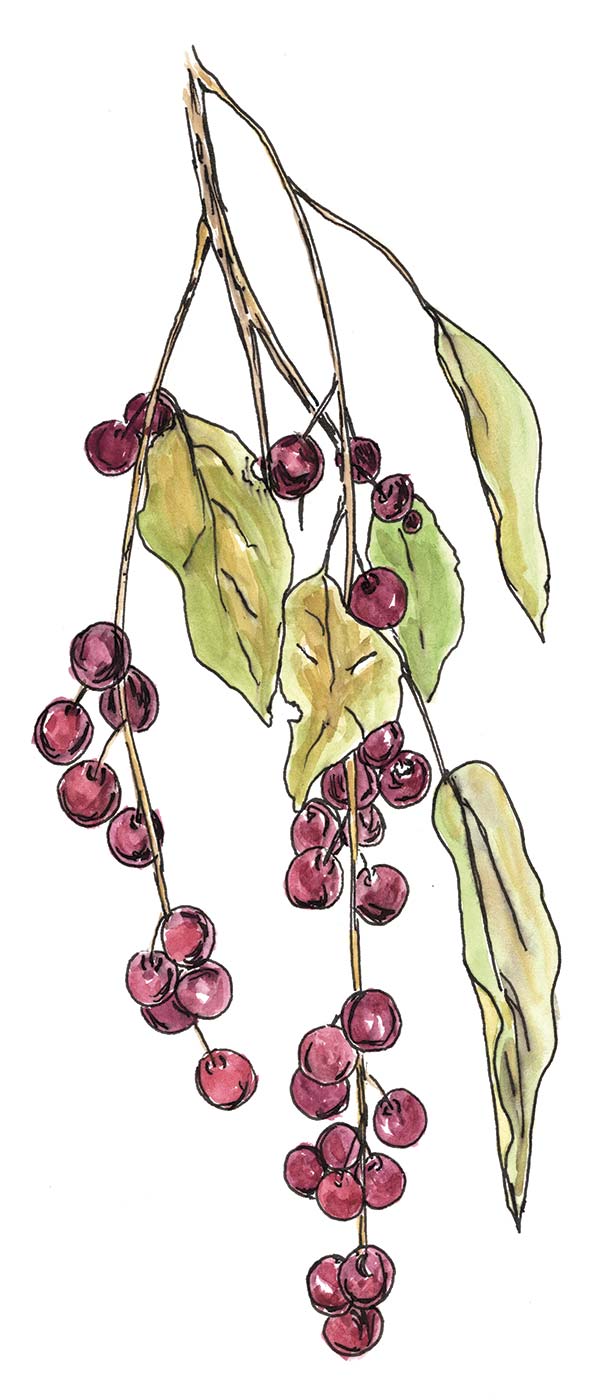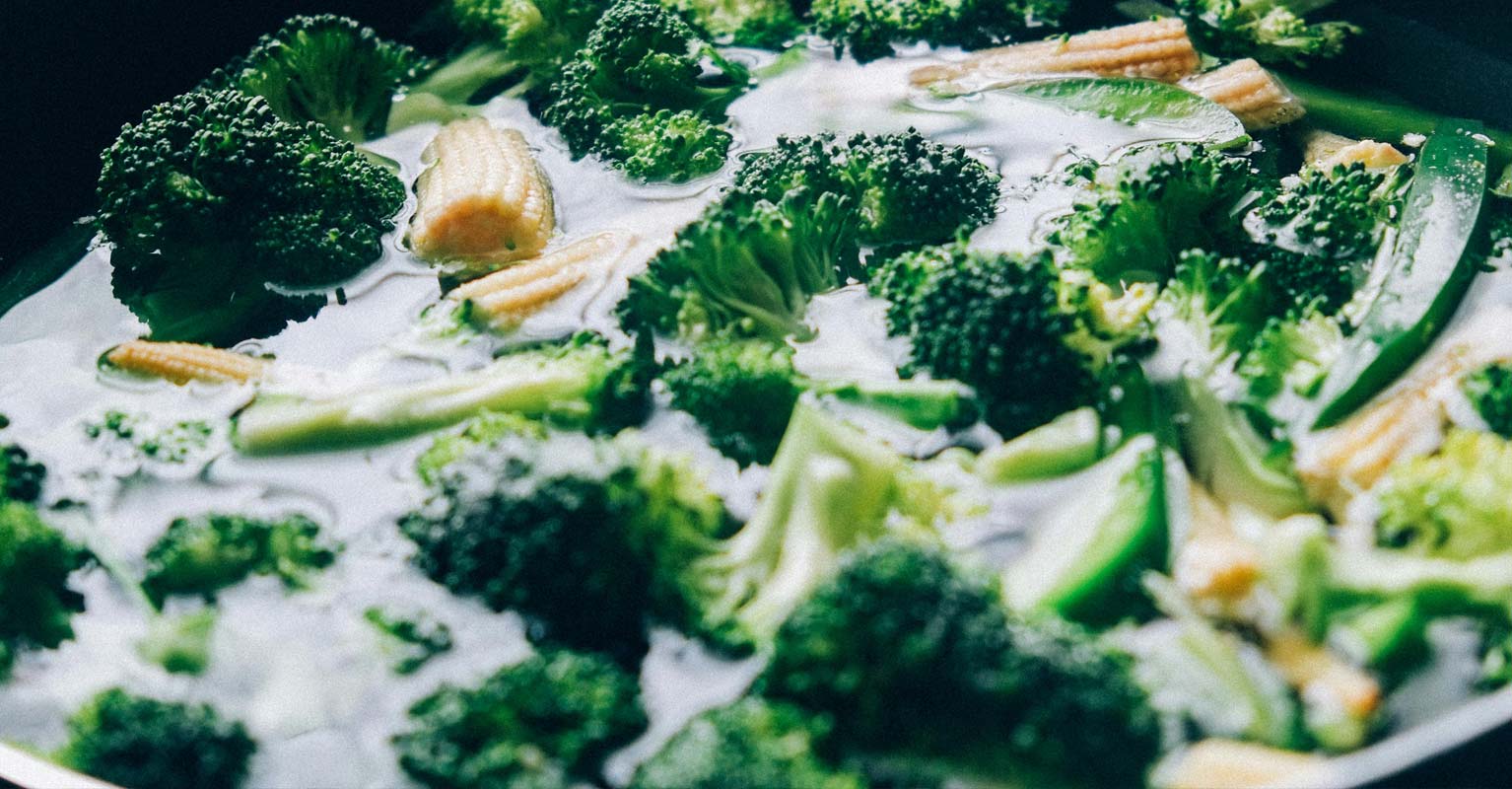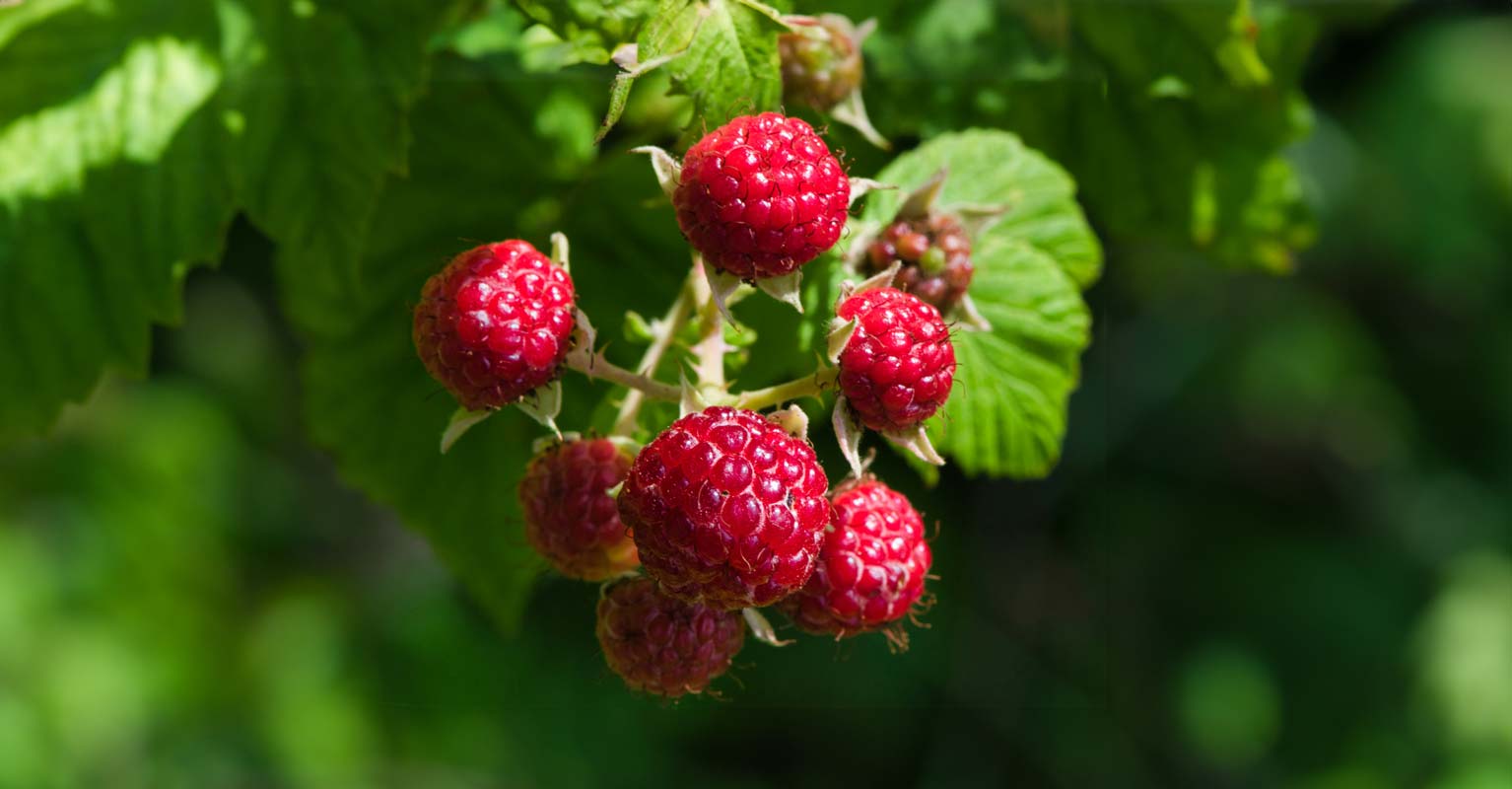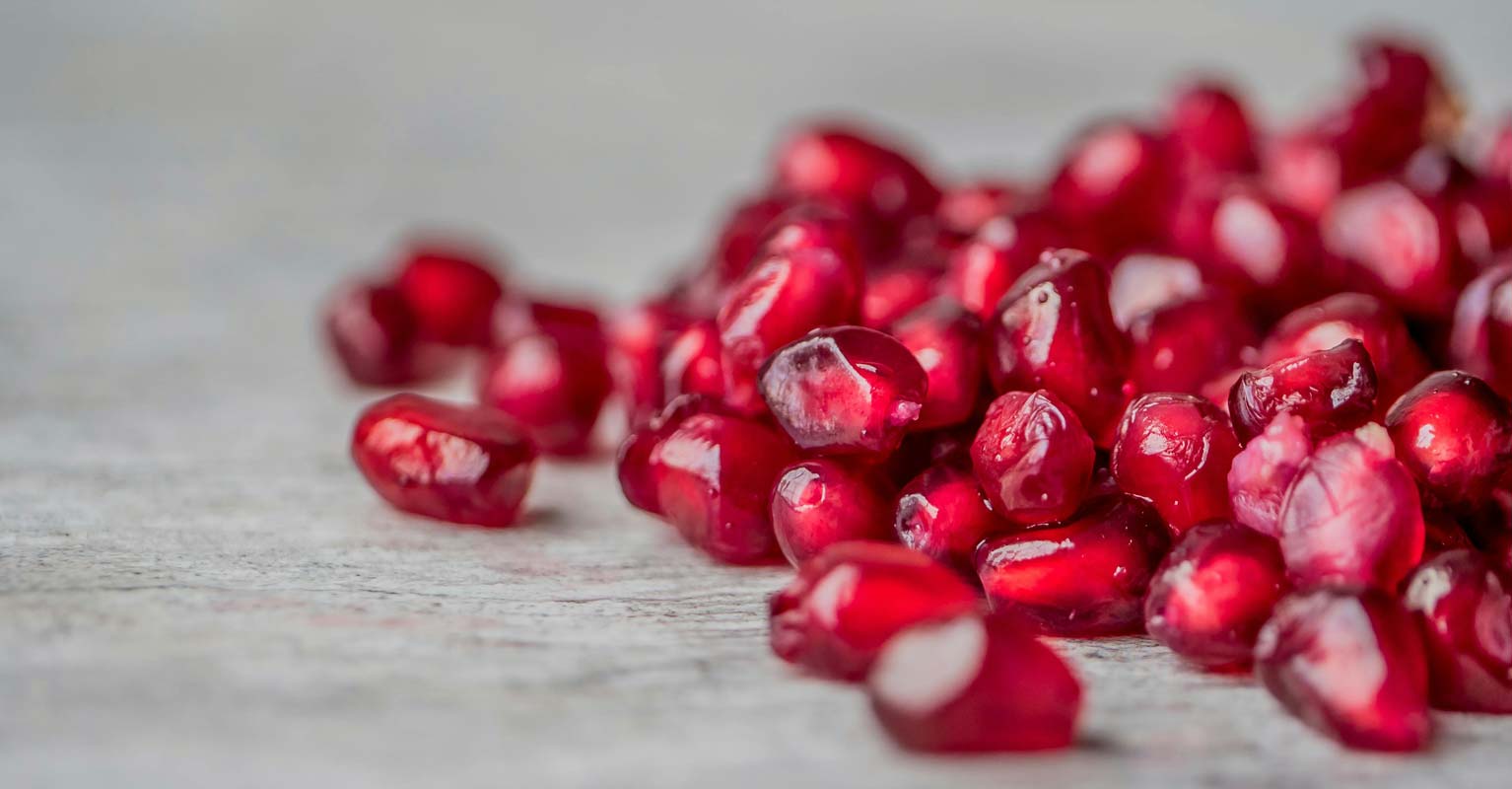CHOKECHERRIES

There was a time when I thought chokecherries were merely scraggly bushes that started in the alley and hung over our fence. I didn’t pay much attention to them, but the birds sure did. My perception changed when we took our surprise rooster over to Clyde Park, Montana, to be rehomed. The owner of the farm invited us into the kitchen, where dark bottles covered the counters— she was making chokecherry syrup.
Chokecherries are widespread across Montana and bloom in June with long clusters of tiny, white, roselike blossoms. The berries mature from red to a purply-black by late August and into September. They are mostly pit and skin, and the taste is quite astringent, which is why they are usually made into syrups or jellies.
A pound of fruit will yield about 2 cups of juice, which is a good amount to sweeten and reduce into your own syrup that you can use for sparkling water or cocktails. It goes especially well with ginger ale and apple cider.
For a primer on preserving these berries, visit fwp.mt.gov/montana-outdoors/recipes and look for “Chokecherry Jelly, Syrup, and Liqueur” by Lee Lamb.
Also, consider joining the celebration at the 34th annual Chokecherry Festival in Lewistown, Saturday, Sept. 9.
LEMON CUCUMBER
These cucumber varieties are called “lemon” for their size and color only; their flavor is straight up cucumber, perhaps even a bit milder than the regular ones. Sadie Collins from Highland Harmony Farm brought an assortment of round cucumbers to the farmers markets last year—here’s hoping she has them this summer as well. Buy several—they last awhile in the refrigerator and due to their smaller size, you won’t have those pesky half cucumbers lolling around in the produce drawer.
Enjoy lemon cucumbers raw and crispy, or let them soak up the oil and vinegar dressing of a Greek salad (together with olives, tomatoes, feta, and some oregano) or a Japanese-style dressing with rice vinegar, soy sauce, and a pinch or two of sugar. There’s a salad I remember from my childhood that used rice vinegar and sugar—no soy—which I loved.
And yet another reason to keep cucumbers on hand is their pairing in a cooling yogurt sauce called raita: Simply add chopped or grated cucumbers, a squeeze of lemon, and a pinch of salt to plain yogurt.
DILL
Dill loves fish, from gravlax to poached salmon, shrimp, and tuna salad. It also works well with anything that goes with fish: Think beurre blanc or even a cream cheese schmear for bagels. You can add dill to your ranch dressing and to marinades for eggplant slices headed for the grill. (Eggplant gyros, anyone? Find the recipe on my blog, ripefoodandwine.com, by entering “eggplant” in the recipe search box.)
Dill happily grows in a pot or the garden. At the end of the growing season, let your dill flower and go to seed, then collect the dried seeds—they are another delicious way to appreciate dill.




